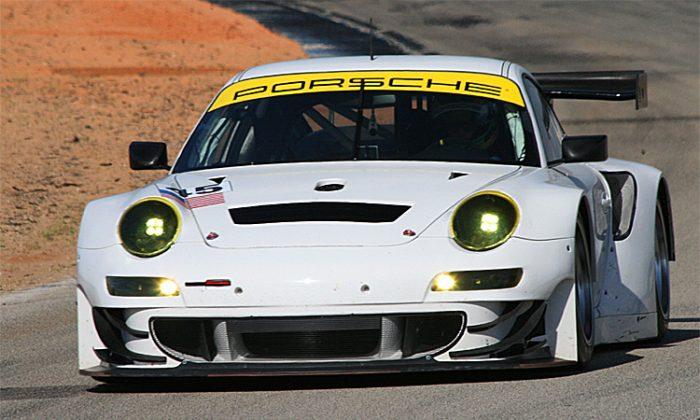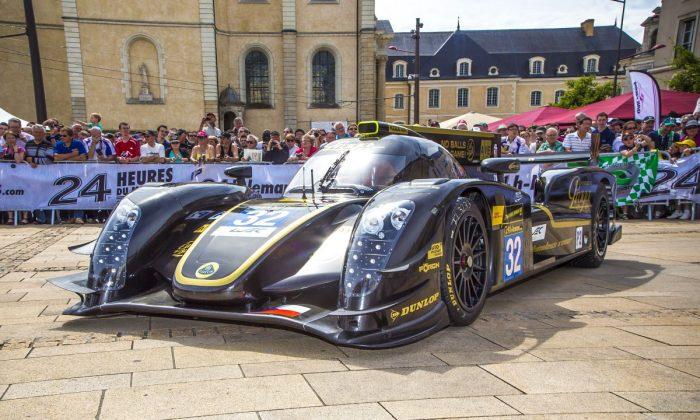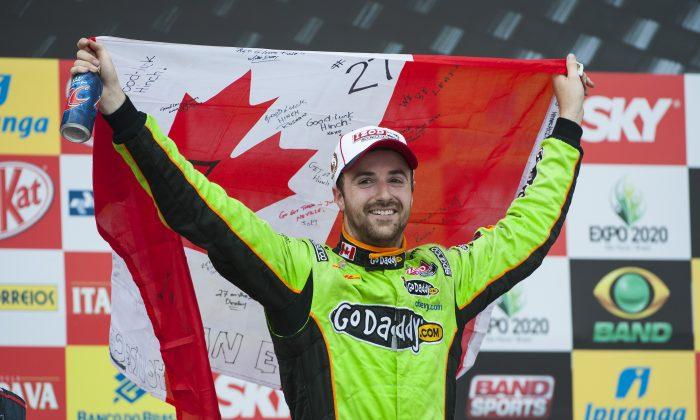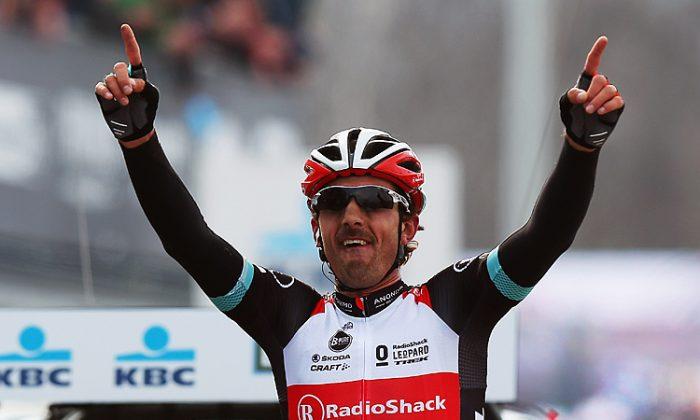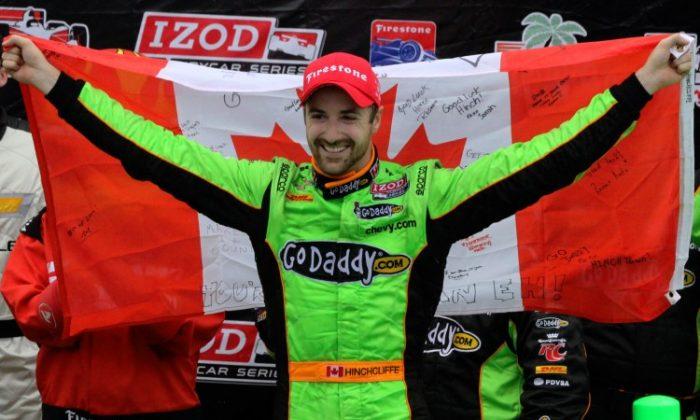SEBRING, Fla.—Porsche delivered its brand new 2012 Porsche 911 GT3 RSRs to several American Le Mans Series teams for the ALMS Winter Test that was held Feb 8–9. A lot of teams had troubles setting up the new cars at first, but by the end of the final session, lap times were coming down.
During the Thursday lunch break, Jens Walther, president of Porsche Motorsport North America and Patrick Long, Porsche factory driver working for Flying Lizards, talked about some of the features of the new car.
Walther described how pleased Porsche was that three different teams would be using three different tire manufacturers—Michelin, Falken, and Dunlop—saying Porsche welcomed that competition.
As for the car itself, Walther pointed out that the track was wider, the front- and rear-end aero totally new, and the air intakes were now through vents in the front of the rear fenders. Also, the car now used taller, wider tires. The drivetrain is unchanged from 2011; Porsche put all its efforts into making the chassis work better.
These changes created problems for Porsche teams—all their setup information was now invalid. None of the teams using the new, wider, 2012-spec GTs were finding it easy to adapt—neither Corvette or BMW could match the pace of the Ferraris—but Porsche, because it supplies the most teams, had the most teams struggling to find answers.
Patrick Long offered a driver’s-eye view of the new platform. The first thing he pointed out was that the car finally had the front-end grip Porsche drivers had been begging for, for years. Being rear-engined, the Porsche 911 had always had ample rear traction but couldn’t get the front end to stick. The new chassis and bodywork addressed that issue.
“The wider track and bigger front end—I could feel it right away, when we first went out to bed the brakes,” Long told the reporters gathered in the Flying Lizard pavilion. “It was more responsive, it was a little heavier in my hand. I have a more responsive front end—that’s what we have been pushing the engineers to bring us—give us more front grip.
“We have more rear aero at our disposal but until we can balance it with front grip, the rear isn’t going to do us any good. Everything, between the splitter, the wider front, the wider track—everything is giving us more grip in the front to where we can then make more aero in the rear.”
Next: Long describes the new car’s performance and potential
Long explained that at a bumpy track like Sebring, the extra downforce actually smooths out the bumps by keeping the car pressed to the track.
“Back in my Spyder days when I went to a stiffer LMP car I thought ‘Sebring’s going to be that much harder to drive,’ and it was actually opposite. What happens is when you gave a car, which is more aerodynamically efficient and is creating more downforce, it makes the car’s job and the driver’s job easier over these huge bumps we have here around Turn Seventeen and Turn One. My first thought here was, ‘These guys have done their job with the aero and my job is now easier through Seventeen and One.’
“So many of my years here at Sebring have been spent just holding on through Turn One and wondering where the car’s going to land on exit, and now the car is more squatted, dynamically there is less movement, and therefore the car is going forward rather than sideways.”
Long said that the car was basically running just as it came off the transporter: “We haven’t even had time to put stickers on the car.” The team hadn’t found the need to make any spring changes; they were adjusting the shock absorbers and making other minor changes and finding big chunks of speed.
“At Sebring you usually tap-dance between a car with good platform, meaning dynamically in the corner the car is good through transitions from braking to rolling to accelerating—if the car’s happy on that side, and the driver’s happy, then usually it’s too stiff in the bumps for us to find the limit,” Long said.
“I had both sides yesterday, with platform and drive quality. We didn’t make a spring change all day; we basically just ran it the way it came off the truck. That’s why we are excited right now. We might not be blowing the doors off the competition but everything has been very progressive, very linear in how we have methodically worked through all these changes.”
The veteran Porsche pilot was confident that the new car would be more competitive throughout the 2012 season. [etssp 522]
Porsche was always good at low-speed tracks, Long said; now the car would perform well on faster tracks, too.
“It’s going to be impressive on the low-speed tracks like Lime Rock, or a street course, because those are our strengths with the 911; it’s not so much about horsepower, it’s more about efficiency, tire wear, direction change, traction with the rear engine, so I am excited about that.
“Where we’ve lacked have been places like Mosport or Road America because we weren’t as slippery in a straight line and we didn’t have the downforce that some of our competition was making in the higher-speed corners, so that’s where I see the biggest changes; here through Turn Seventeen, and we will see a lot of that at places like Mosport,” the he explained.
The No. 45 Flying Lizard Porsche finished the two-day ALMS Winter Test lapping two seconds faster than when it started, but still, although it was the fastest Porsche it was sixth in class behind the Ferraris and Corvettes (though it outpaced the 2011 champion BMWs). Obviously Porsche teams need to do more work to find the balance, but when they do, Patrick Long and co-driver Jörg Begmeister should be in good shape to repeat their 2010 GT championship win, armed with Weissach’s latest GT weapon.
